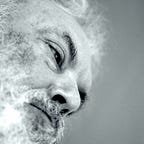The Use of Lateral Thinking
Edward de Bono
New York: Penguin, 1967, reedited 1990.
The Use of Lateral Thinking is one of Edward de Bono’s first publications, a book written in the 1960s; but it is one of his most important books.
It seems that few have understood the book when it appeared more than forty years ago. In the first chapter of the booklet, the author introduces the idea of lateral thinking and defines it as a concept.
Orthodox education usually does nothing to encourage lateral thinking habits and positively inhibits them with the need to conform one’s way through the successive examination hoops. /15
The second and third chapters prepare the ground for the main part of the study which unfolds as a meticulous examination of perception habits. In these chapters, the author makes interesting remarks about how ideas are born.
Where are ideas coming from? How to generate new ideas? Truly, these questions are important not only for artists, writers or designers, but also for business leaders. We can observe in recent years that it is surprisingly not always large corporations but more often than not mid-sized or small companies that are leading the competition by their intelligent and novel approach, focused customer care and an effective cycle of innovation.
For de Bono, this was not new thirty years ago. He wrote that it is ‘not possible to look in a different direction by looking harder in the same direction.’ He thought that for innovation, the tough, hard-working approach is dysfunctional, which is why he advocated flexible intelligence as the prime mover for ultimate success.
One of the major tasks of lateral thinking is to identify and overcome dominant ideasbecause a dominant idea can be a real obstacle in the creative thinking process. In every business, dominant ideas are very subtly and often imperceptibly built into the system through the formulation of strategies, marketing slogans, habits and traditions, the archaic ‘we have always done it that way and it has worked for us.’ In the fifth chapter, the author summarizes his thorough examination of thinking habits and writes:
With most situations, what starts as a temporary and provisional manner of looking at them soon turns into the only possible way, especially if encouraged by success./68
